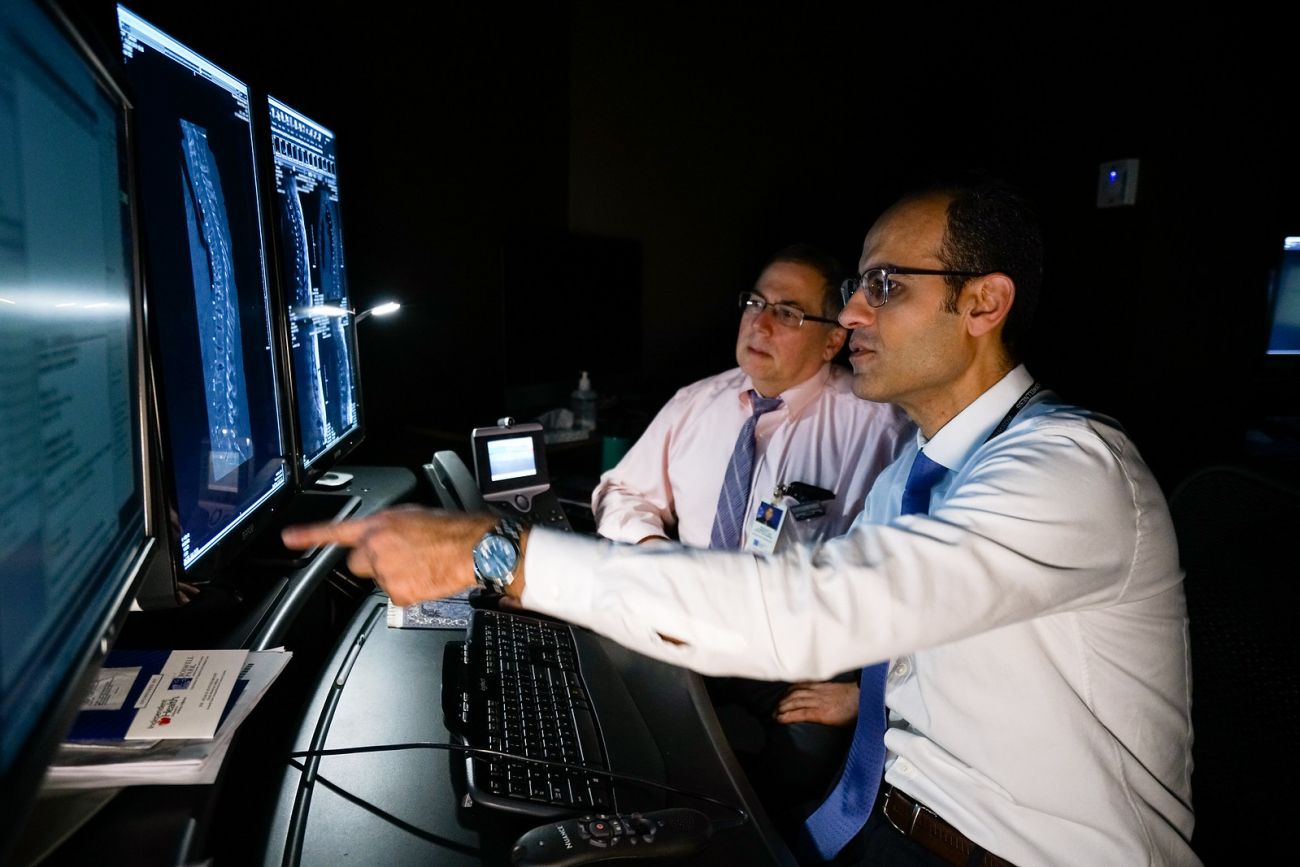Neuroradiologists are specially trained doctors who have years of additional training that prepares them to create and interpret images of the brain, spine, and head and neck, in order to:
- Guide medical instruments to the location of a tumor to obtain biopsies
- Make a diagnosis by showing specific features of the tumor
- Target the tumor’s precise location to plan radiosurgery and open surgical treatment
- Guide the surgeon along the most direct path to the tumor so it can be removed safely and confirm afterward that the entire tumor has been removed
- Map out specific areas of brain function to help the surgeon protect critical structures (a study called functional MRI or fMRI)
- Provide some types of interventional pain relief, including kyphoplasty (see box below), radiofrequency ablation (RFA), and epidural and nerve-root steroid injections
- Provide minimally invasive diagnostic procedures, such as cerebral angiography, to assess the vessels of the head and neck in relation to a tumor
Both of Roswell Park’s neuroradiologists — Ronald Alberico, MD, Director of Neuroradiology/Head & Neck, and Ahmed Belal, MD — are fellowship-trained and board-certified in diagnostic radiology.
Spine fracture first aid
Some cancer patients develop fractures in their vertebrae, either from their disease or a resulting side effect of radiation therapy or steroid treatments. Such fractures can be very painful, and if a vertebra collapses, the spine may also begin to curve forward, causing spine deformity and difficulty with balance and increasing the risk of additional fractures.
Roswell Park’s Neuroradiology Department offers two types of minimally invasive treatments to treat these conditions:
- Vertebroplasty involves filling spinal fractures with bone cement.
- Balloon kyphoplasty is a modified version of vertebroplasty that can also correct spinal curvature caused by a spinal compression fracture.
Performed on an outpatient basis, both procedures can provide significant pain relief from the spinal fractures. In many cases, mobility improves dramatically and pain medications are no longer needed.
